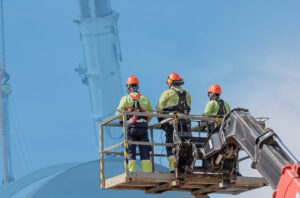New guidance designed to assist fire and rescue services in undertaking and supporting full and partial evacuations from high-rise residential buildings has been published by the Home Office. While this guidance is aimed at the Fire and Rescue Services, it will also be of interest to anyone involved in designing or managing high-rise buildings.
The guidance sets out nine key national guidelines and highlights some key points for each, including:
Building height (timing of evacuation)
- Doubling the building’s height does not necessarily double the total evacuation time.
-
- Stair movement and the capacity of stairs available are key factors in affecting simultaneous evacuation times
- Pre-evacuation factors such as searching for information and getting belongings together substantially increase total evacuation time
Staircases (timing of evacuation)
-
- Having an unobstructed staircase dedicated entirely to firefighting activities and another solely for evacuation improves evacuation times via stairwells
Evacuation alarm systems versus door-knocking
-
- Initiating evacuations through alarm systems significantly reduces total evacuation times in comparison to door knocking alone
- Additional methods, such as drones and portable speakers, could be used in the future to help in initiating evacuations
Emergency evacuation methods for residents
-
- Refuge points and evacuation lifts have the potential to be useful in an evacuation and are useful for providing an evacuation route or safe area for those who previously would be forced to stay in the building
Evacuation movement and vulnerable residents
-
- Vulnerable residents using crutches or evacuation chairs were typically slower
- Those evacuating with small children were not impeded
- Those evacuating were reluctant to move past slower-moving, vulnerable people, causing congestion
- Escape routes should remain protected and clear of smoke and heat
Undertaking evacuations of vulnerable residents
-
- Fire and rescue services should be aware that vulnerable residents will generally not have an evacuation plan in place
- Vulnerable residents will generally be reliant on firefighters to undertake their evacuation
Information on vulnerable residents
-
- Fire and rescue services should be aware of and open to receiving information regarding vulnerable residents
- Responsible persons should share information about their buildings and residents with their local fire and rescue services
- Vulnerable residents should share their flat number, floor number, the nature of the resident’s impairment, and whether there is an evacuation plan in place with the fire and rescue services
Evacuee’s behaviour
-
- People may engage in protective actions before starting a movement to safety, such as preparing themselves for evacuation
- The extent of the delay caused by these actions will differ depending on their individual circumstances, their perception of the incident, and the presence of children and the elderly
- The fire and rescue services should be aware of such delays when undertaking evacuations
Information sharing amongst residents
-
- Information is critical for resident response
- Residents will tend to seek and share information with others, including social media, when they first become aware of a potential fire
- Fire and rescue services should consider how this may impact people’s behaviour and if this can be used to communicate with residents
The full guidelines can be found on the Gov.UK website.
If you have any questions or would like support with managing issues at your workplace, please speak to your usual contact or get in touch using the form below.

New rules for providers of social housing in England

Small but mighty – working safely with nanomaterials

Do you have a MEWP rescue plan?

Changing the asbestos control regime

HSE Launch Motor Vehicle Paint Spraying Campaign
